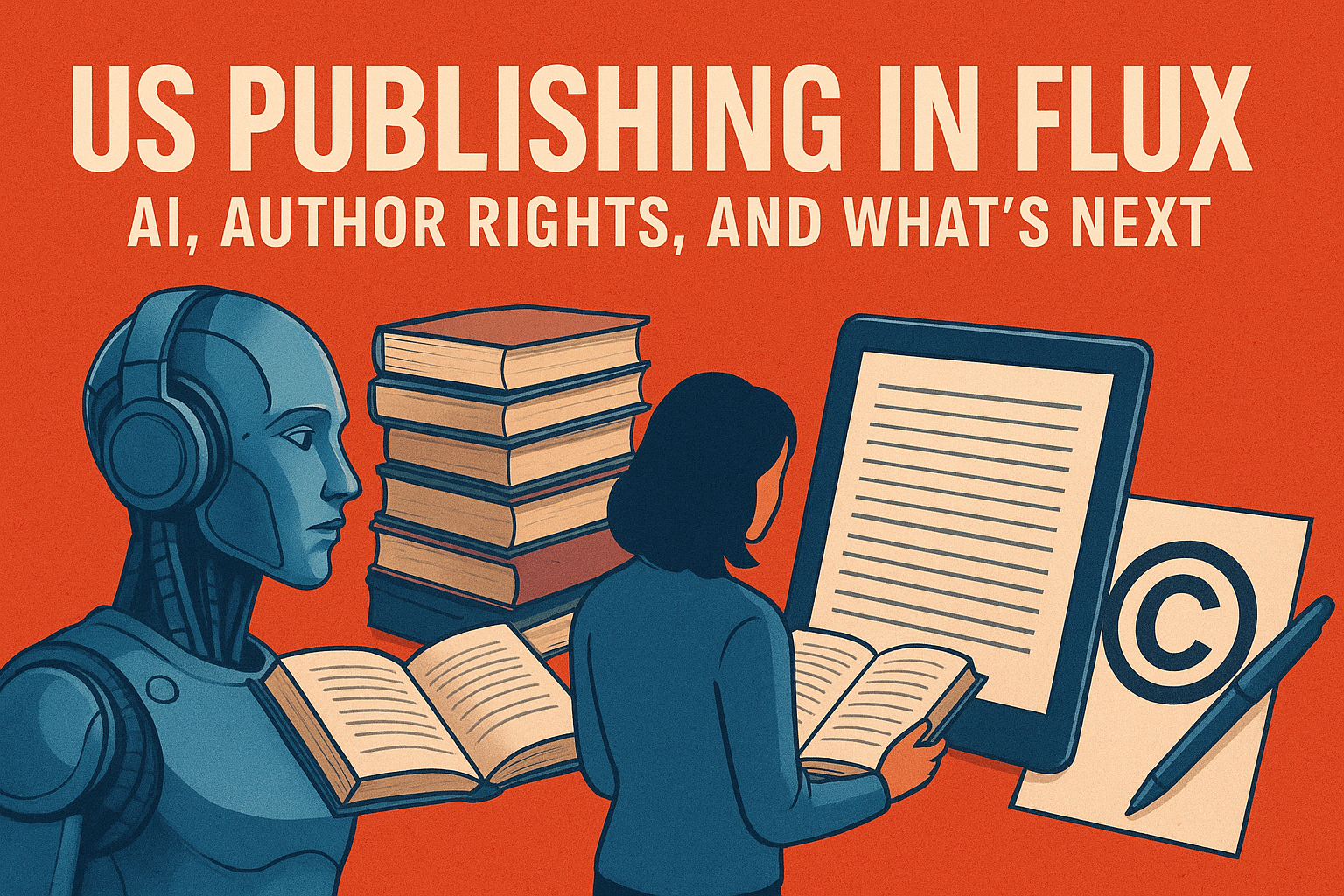How to Write Your First Book

If you’re writing your first book, the blank page that stares back at you can be quite a daunting sight. And that’s even assuming you have already figured out the pertinent details about your book. Which is another challenging exercise to tackle — preferably before you sit down to write your first sentence. Even more experienced authors can get twitchy when faced with the blank first page of a new book. But as you carry on, the sense of accomplishment (as well as relief and catharsis, in some cases) that you get out of the experience will eventually outweigh all the second-guessing and hesitation, the frustration, the episodes of writer’s block, and all the other factors that give writers a headache.
The Process of Writing a Book
Writing begins before you actually put words down on the page. It entails responding to inspiration, planning, research, making decisions about how to organize your book, how to approach your subject matter, and creating an outline — those are all inherent in the writing process.
Writing a book also requires the necessary mindset and skills. To write an engaging book, you yourself as the author needs to be engaged — engaged with your subject matter, with the world around you, and with your readers. You also need to take on the writing process armed with a firm command of language and grammar. After all, your words have to make an impact on your readers — whether to enlighten them, challenge their existing notions and beliefs, educate them, entertain them, and so on.
Last but not least, writing a book involves understanding the difference between fiction and nonfiction writing and knowing what your genre, and subgenre (if any), requires.
Writing Fiction vs. Writing Nonfiction
Fiction and nonfiction books, further divided into genres and subgenres, demand different treatments. Most fiction and nonfiction writing research, but the difference lies in how the information gathered is used.
Fiction
Fiction is novels, novellas, and short stories, and each of them require a unique approach. A novel is the most expansive and will allow you plenty of leeway in terms of pacing and length. A novella, typically around 7,500 to 40,000 words (60 to 120 pages), is shorter than your standard novels but longer than short stories. The subplots and back stories (if any) in a novella are less elaborate than in a novel, but the conflicts are typically better defined than in a short story. Lastly, short stories have no room for numerous and/or elaborate subplots as well as tangential elements that ultimately enhance certain elements in a novel. However, its limitations when it comes to length also challenges an author to get more creative with their storytelling, as in the stream-of-consciousness narration in “A Telephone Call” by Dorothy Parker and the use of second person point of view in “Snow” by Ann Beattie.
Nonfiction
Nonfiction books include biographies, autobiographies, memoirs, travelogues, self-help and instructional text, guides and manuals, journalistic/investigative text, insight and philosophy books, religious text, and books on other fields such as art, architecture, psychology, forensics, culinary arts, etc. Depending on the subject matter, the target audience, and the author’s purpose, some nonfiction books are written using formal or near-formal language. Some are written in a more conversational tone despite the subject matter being serious or academic (i.e., philosophy, psychology, economics). And still some nonfiction books read like a novel. This is creative nonfiction, and this approach is common in biographies and memoirs.
How to Write Your First Book
Technically, writing your book happens in three stages: the prewriting stage, the actual writing stage, and the revision(s) stage. The prewriting stage involves your purpose, plans, and outlines. The actual the writing stage involves filling the blank pages with your words. The revision stage is all about fine-tuning your first draft — which can translate into two or more revisions, followed by copyediting and proofreading.
The pre-writing stage
1. Establish your purpose for writing.
Knowing why you’re writing your book and who you’re writing it for is the best way to start your writing journey and keeps things running smoothly down the line. You will have better control of the process, and be able to handle any shifts and changes spurred on by new ideas and inspiration instead of lose the plot altogether. Having a clear purpose for writing and knowing who your audience makes it easier to establish your scope. This is especially true if you’re writing nonfiction. You can set accurate research parameters, and engage in any communications with sources (whether it’s face-to-face interviews or interviews via email, chat, video chat) and, ultimately, manage your time better.
Do you know why you want to write a book?
Here are the most common motivations for first-time authors:
Self-expression. Human beings need to communicate, and writers write to express their ideas, feelings, sentiments, and beliefs concerning any given topic.
Storytelling. Many authors want to tell stories and make an impact on their readers, while giving themselves a platform for introspection, exploration, and good old literary adventure. Authors of storytelling-oriented text like a novel or a memoir aim to tell a story that will inspire their readers or help them see the world and themselves in a different light.
Information. Authors who aim to provide practical, sobering, or empowering information want their readers to impact their readers’ lives with knowledge. They write chiefly because they want to see change — hence they share information that can spur people into action.
Education/instruction. Some writers aim to educate and guide their readers as they learn a new skill, start a new job, or do better at their job.
Entertainment. Writing for this purpose can be especially enjoyable and rewarding, especially since close to half (44%) of American adult readers read for fun, according to a 2020 survey by CivicScience.
2. Know who your readers are.
You’re engaged in a two-way communication, and knowing who the other party is, is key. But did you know that you will actually be writing for two audiences? First, there’s your target readers, and then there’s you. How well do you know them? Knowing who you are writing for helps you tackle your subject matter with conviction and confidence.
3. Map out your book.
Once you have established your purpose for writing and identified your readers, you can move on to mapping out your book. For this, you can’t go wrong with a mind map. It’s a visual organization method that helps you highlight important topics, subtopics, and pertinent facts.
Start your mind mapping exercises by writing down a central theme in the middle of the page. From there, relevant topics can branch out, some with subtopics and specific notes and anecdotes. This helps you organize your thoughts more efficiently, so you can access them easily. All of that allows you to write better.
4. Create an outline.
Once your book is mapped out, you can go ahead and generate an outline. First, establish the chapters, or determine whether the book should be divided into parts and then into chapters. Then you can fill in the sections as needed. Depending on your genre, your sections can be either titled or untitled. If the latter, three asterisks should do the job of signaling transition. A clear outline helps you avoid having to go back and forth for reference.
5. Determine how long your book needs to be.
The word count or number of pages will be a ballpark number, but it should be give you a good idea of how long your book is going to be.
For this, you need to know the common preferences:
· Nonfiction books are typically 20,000- to 60,000 words (40–120 pages single spaced). Yes, you can write 100,000 words or longer — preferably only if you have extensive relevant material and/or an engrossing subject matter.
· Debut adult or young adult novels are typically no longer than 100,000 words (200 pages) — preferably 70,000 to 90,000 words. You’ll get more leeway once you’re a published author.
· Memoirs are 60,000 to 100,000 words (120–200 pages). They may not be as accessible if they are longer, and they may not be as compelling if much shorter.
· Science fiction and fantasy books can be as long as 110,000 words (220 pages) since they would require considerable worldbuilding.
6. Set a (not-so-strict) deadline.
Treat your deadline as a motivator for you to stick to a writing schedule. Set a realistic deadline and then determine how and when you can be most productive and creative and make the most of those stretches of time. Avoid cramming just to meet your deadline — chances are you’ll end up sacrificing quality.
7. Determine the type and scope of research required (if any).
Most writing projects involve research. If you’re writing to educate or motivate your readers, your research may involve interviews of resource persons, in addition to reading related literature and viewing several hours’ worth of relevant videos.
8. Set a writing schedule.
Commit to writing for five to six days each week, but allow yourself to take an unplanned break or two. Do something that’s not related to writing. Preferably, use your break for rest and relaxation. Going to the beach, going on a staycation, or a long walk can help clear your head and get those creative juices flowing again. Pro tip: Journaling is a great exercise for any writer to track their thoughts and inspiration and prime their brain for all the creative and technical work ahead.
The actual writing stage
1. Write your first draft.
With your first draft, anything goes. Write without self-consciousness, without editing. Just go on and write. It’s understandable for first-time authors to feel clueless. Try imitating your favorite authors to get going.
Take note, though, that however loosely you approach writing your first draft, you still need to tick off the following important points:
Come up with a great hook.
Whether you’re writing fiction or nonfiction, you need a great hook to pull your readers in and get them beyond the first few page or two. For fiction, your hook can be anything from a tense or critical moment or the riveting introduction of a character. For nonfiction, your hook can be an anecdote, a statistic, or a question.
Establish your tone.
Your book needs to have a tone, and it must be the tone from start to finish, unless your plot specifically requires a tonal shift.
Flesh out your characters.
Make your characters come alive on the page: Give them a compelling backstory, give them a unique or specific way of talking, describe their appearance in vivid details, give them mannerisms, give them quirks, explore their relationships, look into their motivations and ambitions, identify their limitations and restrictions, etc. Your characters should have personalities that are uniquely their own.
Establish your plot.
Your plot and your characters are interconnected, so make sure that your plot development is consistent with your character’s traits, decisions, and choices. Check for improbable scenarios, unnecessary developments, and illogical shifts.
Explore your themes
Examine your themes through your characters and your plot. They should be effectively conveyed and give your readers something to think about.
Explore your ideas
In nonfiction, unpack your ideas and lay them on the table for your readers. Be prepared with your research and supplementary materials to establish your credibility.
Support your arguments
If you’re making controversial or major claims or proposing a solution to a specific problem, then be prepared to present every compelling argument possible.
2. Use writing tools that help you to write easier and better.
Choose the word processor that allows you to work effectively. You can always convert your documents if your publishing company requires a different program. Microsoft Word and Google Docs are currently the most widely used, with completely free alternatives that include these:
1. Apple Pages
2. Libre Office
3. Zoho Writer
4. Calmly Writer
5. Focus Writer
6. WPS Office
If you prefer to clean up your manuscript yourself, even if you will eventually use the copyediting or line editing services of your publishing company, you can also use apps like Grammarly and PerfectIt to spot and address grammatical and spelling errors as well as style and construction issues.
3. Revise your draft.
Before anything else, when you’re finished with your first draft, leave it alone for six weeks or so before starting on revisions. Give yourself enough time to decompress and prepare for a new set of challenges when revision work begins.
During revision, get constructive criticism from people you trust. They are in a great position to catch details that could make or break your book. Feedback from people who can be objective about your writing will help you fine-tune your writing.
4. Add and/or edit documentation (if any).
If your book requires documentation (i.e., footnotes, endnotes, bibliography, or reference list), set aside the necessary time to add your citations and then proofread them. Refrain from adding in your citations while you’re still writing the main text because the additional task will mess with your focus. Wait until you’re done with your main writing task before moving on to your documentation.
Your manuscript will likely undergo copyediting or proofreading with your publishing company, but it never hurts to get things right on your end:
Follow one style guide. If you don’t prefer any particular style guide, we recommend The Chicago Manual of Style (CMOS), since the Chicago style works well for text on the humanities and sciences. You can also use the Publication Manual of the American Psychological Association: 7th Edition. Just be sure to follow the same style guide in both your main text and your documentation.
Provide all the necessary elements in your citations. You are the best person to provide all the necessary details for your reference citation, so be sure that there are no missing elements. Your publishing company is not likely to perform an exhaustive edit of your documentation, which would include adding in missing details.
Pro tip: Your word processing software has a documentation style option feature that will format your citations. You can also use a citation generator (e.g. Scribbr, Citation Machine).
Revision(s) stage
1. Edit your manuscript. (Or use an editing service.)
At this stage, you will have performed all your revisions, so what you’ll need to do will be either copyediting or proofreading. Or you can wait until your manuscript has been professionally edited before you make the final corrections and minor modifications.
2. Work on the final touches.
Prepare or review all supplementary materials (if any). Supplementary materials can include photographs, illustrations, and documents that need to be reproduced or encoded as part of appendices.
Pass any ideas and specific instructions on to your publishing services team. Communication ensures a successful collaboration with the team working on your book, so communicate clearly to avoid costly errors and delays.
The Takeaway
Writing a book is not for the fainthearted. It requires a healthy balance between some serious multitasking and deep focus, in addition to the necessary mindset, technical (especially language) skills, and creativity. For a first-time author, all these can be downright daunting. But then again, you have to start somewhere, sometime. Might as well start now.




